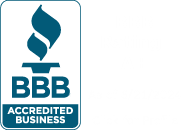Incorporation
The first step to any organization, whether it’s for-profit or nonprofit, is incorporation.
Each state and territory in the United States has a different process for incorporating a new organization. While most states use the term Articles of Incorporation, some states have other names. For example, Texas calls it a Certificate of Formation. The wording may be slightly different, but the purpose is the same: establishing a legal corporation.
While there are many different ways for a business to incorporate, these include Limited Liability Company or LLC, Partnership, S-Corporation, and C-Corporation. While there are many options, all nonprofits must form as a nonprofit corporation. As a legal corporation, nonprofits can enter into contracts, be sued, and perform other functions permitted by law.
Further, incorporating as a corporation defines the ownership of the nonprofit. An LLC, for example, is owned by an individual. Because a nonprofit exists for public benefit, no one may claim ownership of the entity. Instead, nonprofit organizations are overseen and managed by the Board of Directors. Likewise, all assets belonging to the organization are owned by the nonprofit. This important distinction is a requirement of the IRS.
Articles of Incorporation requirements vary by state. Some, like Illinois and New York, require the initial board members’ names and addresses. Others, like Michigan and Florida, require a description of the organization’s purpose. While the requirements vary, there are a few things every incorporation document requires. Those are a dedicated address, Incorporator, Registered Agent, and IRS clauses.
Organization Address
To incorporate, every organization must list a street address in the state of incorporation. This address serves as the organization’s place of operations. A P.O. Box is not permissible for organizational addresses, though some states allow them as a separate mailing address.
Some organizations may not have a permanent and ongoing place of operations. For example, an organization may provide free swimming lessons at a local community center or public pool. This organization would use a board member’s home address as the nonprofit’s address. Suppose the organization moves to a rented office in the future. In that case, the nonprofit updates the address with an Amendment or Annual Report. We’ll cover Annual Reports while discussing compliance later in this guide.
Incorporator
A new organization also needs an Incorporator. This person or company files the Articles of Incorporation with the state. In most states, the Incorporator’s responsibilities end as soon as the organization is incorporated. Once the nonprofit’s paperwork is filed, all duties for filing future documents fall to the Board of Directors.
Most states allow a company to serve as the organization’s Incorporator. As a result, BryteBridge may act as the Incorporator to reduce processing time and ensure our clients experience speedy incorporation.
Registered Agent
Every organization also requires a Registered Agent. This person or company legally represents the organization on all paperwork. All official mail, including copies of state filings and notices, are addressed to the Registered Agent.
Like the Incorporator, the Registered Agent does not need to be a board member, staff person, or anyone else directly connected to the organization. All states allow a company to serve as an organization’s Registered Agent if the Board of Directors wants to give that responsibility to someone else. Typically, these companies filter out any junk mail and only pass along official mailings to the organization.
Registered Agents’ main requirement is that the individual must be a legal resident or company registered in the state of incorporation. They must also provide a street address as their mailing address. A P.O. Box is not allowed for Registered Agents. Because a company can serve as a Registered Agent, BryteBridge provides a Registered Agent Service in every state for our client’s convenience should one be desired.
Clauses
The IRS requires specific clauses addressing the organization’s purpose and dissolution (what happens if the nonprofit closes or stops operating). Here, the purpose is specific to all tax-exempt nonprofit organizations and is different from the primary purpose the organization is trying to fulfill. Sometimes the IRS uses the same word to define multiple things.
The IRS requires this language to appear on every nonprofit organization’s Articles of Incorporation. While a few states include this language by default, most do not. Filing for tax-exempt status, which we’ll address later in the guide, requires directing the IRS to this language. If it does not appear in the original Articles of Incorporation, an Amendment adding the language is necessary.
Suppose you’ve already incorporated and didn’t know about the IRS clauses; fear not! BryteBridge’s specialists can help file an Amendment with the necessary language.
Timeframe
The time it takes a state to incorporate a new organization varies widely. Typically, states that allow online filing incorporate new organizations in a few days, while states requiring mailed paper filings take a few weeks.
Once incorporated, the organization is a legal and active entity in the state. A state identification number is assigned that identifies the organization on all state-level documents. This number has different names depending on the state, but is sometimes called an entity ID, charter number, or filing number. This number is different from the federal employer identification number, which we’ll discuss in a moment.
At this point, the organization can start operating. While an exciting and crucial step, you may not have a green light for fundraising just yet. In almost every state, there is an additional step which we’ll address shortly.
Brytebridge Nonprofit Solutions
7021 University Blvd. Winter Park, FL 32792
1-877-857-9002
Monday – Friday EST 9 AM – 7 PM
https://brytebridge.com/


